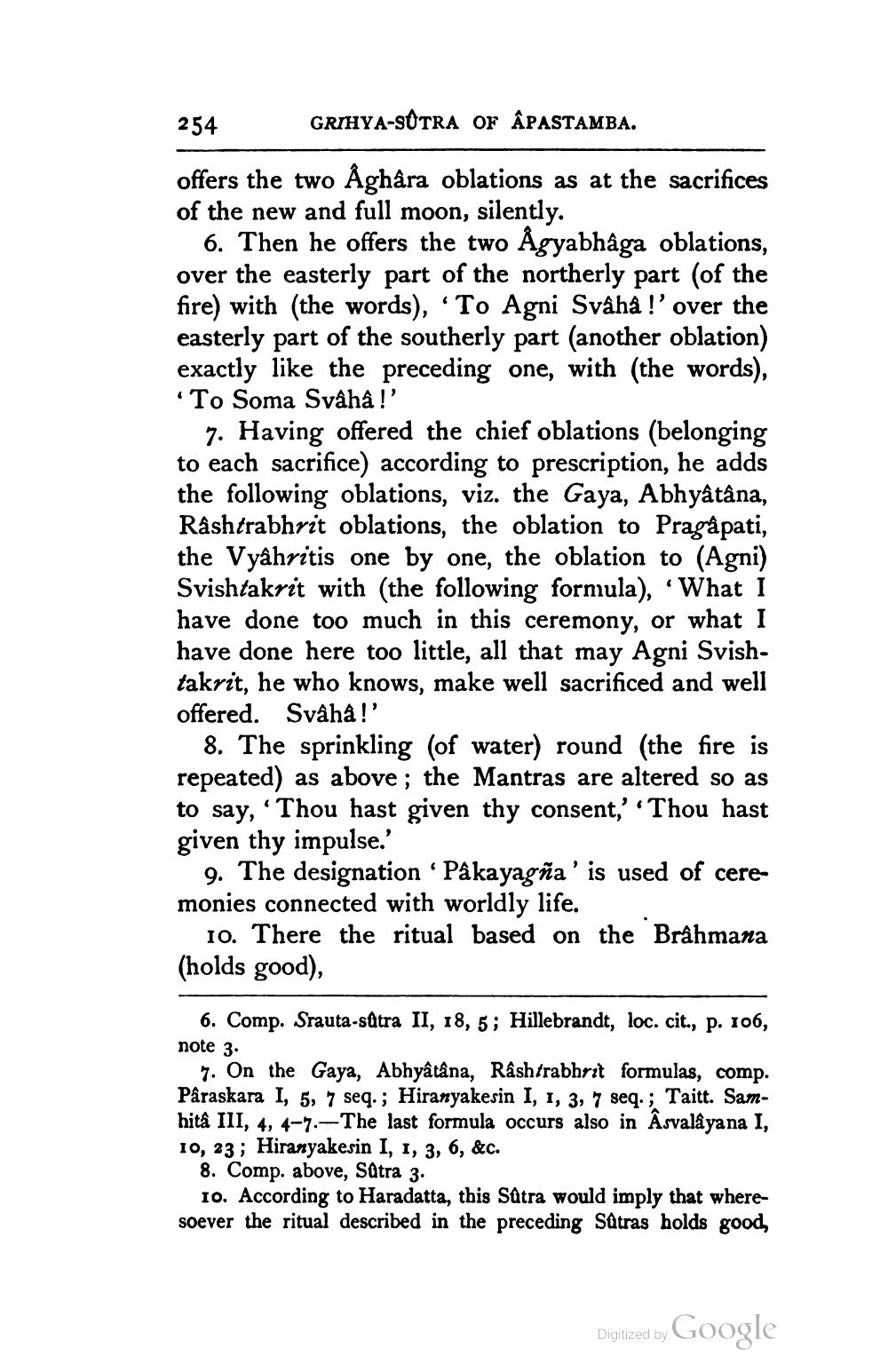________________
254
GRIHYA-SUTRA OF APASTAMBA.
offers the two Åghâra oblations as at the sacrifices of the new and full moon, silently.
6. Then he offers the two Agyabhaga oblations, over the easterly part of the northerly part (of the fire) with (the words), 'To Agni Svâhâ!' over the easterly part of the southerly part (another oblation) exactly like the preceding one, with (the words), 'To Soma Svâhâ!'
7. Having offered the chief oblations (belonging to each sacrifice) according to prescription, he adds the following oblations, viz. the Gaya, Abhyâtâna, Rashtrabhrit oblations, the oblation to Pragâpati, the Vyâhritis one by one, the oblation to (Agni) Svishtakrit with (the following formula), 'What I have done too much in this ceremony, or what I have done here too little, all that may Agni Svishtakrit, he who knows, make well sacrificed and well offered. Svâhâ!'
8. The sprinkling (of water) round (the fire is repeated) as above; the Mantras are altered so as to say, 'Thou hast given thy consent,' 'Thou hast given thy impulse.'
9. The designation 'Pâkayagña' is used of ceremonies connected with worldly life.
10. There the ritual based on the Brahmana (holds good),
6. Comp. Srauta-sutra II, 18, 5; Hillebrandt, loc. cit., p. 106, note 3.
7. On the Gaya, Abhyâtâna, Râshtrabhrit formulas, comp. Pâraskara I, 5, 7 seq.; Hiranyakesin I, 1, 3, 7 seq.; Taitt. Samhitâ III, 4, 4-7.—The last formula occurs also in Asvalâyana I, 10, 23; Hiranyakesin I, 1, 3, 6, &c.
8. Comp. above, Sûtra 3.
10. According to Haradatta, this Sûtra would imply that wheresoever the ritual described in the preceding Sutras holds good,
Digitized by
Google




